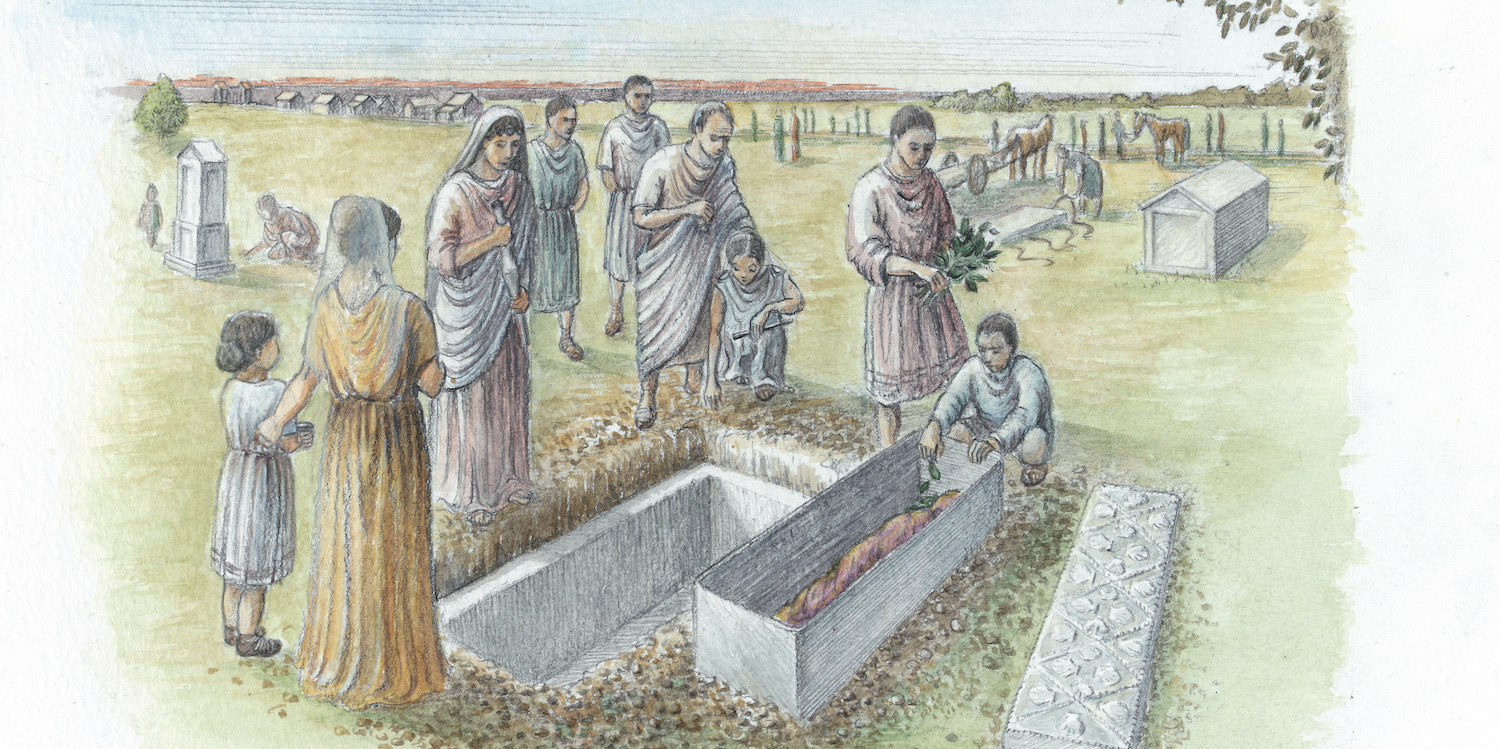
Museum of London Archaeology
- A woman who lived in the 4th century AD and was buried in a stone sarcophagus under a market in London, England, was part of Rome’s elite, researchers have said.
- The woman was first discovered among rows of graves in March 1999 under London’s Spitalfields market.
- While the researchers were aware that she came from a lavish background, recently published books revealed the extent of her wealth.
- Researchers say the woman was wrapped in the highest-quality silk from China, which had been interwoven with fine gold thread made of 97 percent pure gold.
- Visit Insider’s homepage for more stories.
A team of researchers has come closer to uncovering the mystery behind a noble Roman woman who lived in the 4th century AD and was buried in a stone sarcophagus under a market in London, England.
The woman was first discovered among rows of graves in March 1999 under London’s Spitalfields market, which was being excavated at the time.
Her coffin, decorated with scallop shells, indicated at the time that she was someone of great wealth and high status. The extent of her riches has only now been revealed by the team of researchers from the Museum of London Archaeology.
In a new book published this week, the team revealed that after analyzing the woman’s teeth, they found that she most likely “grew up and spent the bulk of her life in mainland Europe – most likely Rome itself – before marrying as a teenager and moving to England,” the Daily Mail reported.

Museum of London Archaeology
It is still unclear who her husband was, although she is thought to have been the wife of one of the Roman senators, who ruled between 350AD and 410AD.
Researchers say the woman was wrapped in the highest-quality silk from China, interwoven with fine gold thread made of 97 percent pure gold.
Further microscopic analysis of the woman's clothing found that a dark brown wool band she wore was actually originally purple - a hallmark of the rich and powerful in Roman Britain.
The new findings come as part of an ongoing 30-year project run by the Museum of London Archaeology.

Museum of London Archaeology
The woman was originally found among the graves of almost 500 individuals, most of whom were men.
The researchers believe that this could be because many men migrated to London for labor in the Roman period, whereas newborn girls were either buried somewhere or murdered deliberately.
The latest book also explains that a whole segment of the cemetery dug up under the market was dedicated to young children, which is considered highly unusual for the time.
'This is often explained in terms of the social status of children in the Roman colonies and classical beliefs that infants did not have souls being reflected in more casual burial practices," a spokesperson for MoLA said in a press release provided to Insider.
"This new evidence raises the question as to whether infants were instead being buried in as yet undiscovered separate cemeteries," the spokesperson added.
Spitalfields Market is now a buzzing market in east London, which sells clothing, jewelry, art, and home items.
- Read more:
- Egypt invited Elon Musk to see the pyramids for himself after he claimed they were built by aliens
- Tower of human skulls reveals more secrets of human sacrifice in the Aztec Empire
- Dozens of scientific breakthroughs this year upended our understanding of human history, the search for alien life, and the coronavirus pandemic
- Jupiter and Saturn are about to appear closer in the sky than they have for 800 years, aligning as a 'double planet.' Here's how to see it.
